Cold Storage for a Single-Family House in Italy
Abstract
:1. Introduction
2. Case Study
3. Operation Strategy and Methodologies of Analysis
3.1. Operation Strategy and Pre-Design
3.1.1. Assumptions and Pre-Design
- during its operation, the chiller has to work at constant power, constant mass flow rate, and constant outflow temperature Tc,out;
- the ratio between the cooling power transferred to the user and the chiller power has to be higher than or equal to a predetermined minimum value, otherwise the chiller is shut down;
- the chiller cannot feed the cold storage system only, that, in other words, means that the cold can be accumulated only when the chiller has to feed the user.
3.1.2. Operation of the Refrigeration System with Cold Storage
3.2. Cold Water Storage Tank Model
3.3. PCM Storage Tank Model
- Fix an initial tentative value for the number of pipes;
- Divide the total PCM volume in its initial state by the number of pipes in order to evaluate the volume of PCM surrounding each pipe, that is supposed concentric to the pipe;
- Knowing the cold to be stored or released and the minutes of operation at each hour, evaluate the thermal power to be exchanged at each hour, and evaluate for each hour the fraction of the PCM volume surrounding the pipes that undergoes solidification or melting using Equation (10);
- Knowing the fraction of PCM that has undergone phase change, determine for each hour the average efficiency of the heat exchanger using Equations (12)–(15);
- For each hour, calculate the thermal power exchanged by means Equation (16);
- For each hour, compare the value of thermal power calculated at Step 5 with the one calculated at Step 3. If the maximum of the absolute values of the differences between thermal power values is lower than a certain tolerance, then stop the procedure and accept the number of pipes. Otherwise, increase or reduce the number of pipes as a function of the above differences and return to Step 2.
4. Results
4.1. Pre-Design
4.2. Cold Water Storage Tank
4.3. PCM Storage Tank
5. Conclusions
Author Contributions
Conflicts of Interest
References
- Silvetti, B.; MacCracken, M. Thermal storage and deregulation. ASHRAE J. 1998, 4, 55–59. [Google Scholar]
- Wang, S.K. Handbook of Air Conditioning and Refrigeration, 2nd ed.; McGraw-Hill: New York, NY, USA, 2001. [Google Scholar]
- Lin, H.; Li, X.H.; Cheng, P.S.; Xu, B.G. Thermoeconomic evaluation of air conditioning system with chilled water storage. Energy Convers. Manag. 2014, 85, 328–332. [Google Scholar] [CrossRef]
- Yan, C.; Shi, W.; Li, X.; Zhao, Y. Optimal design and application of a compound cold storage system combining seasonal ice storage and chilled water storage. Appl. Energy 2016, 171, 1–11. [Google Scholar] [CrossRef]
- Soler, M.S.; Sabaté, C.C.; Santiago, V.B.; Jabbari, F. Optimizing performance of a bank of chillers with thermal energy storage. Appl. Energy 2016, 172, 275–285. [Google Scholar] [CrossRef]
- Kintner-Meyer, M.; Emery, A. Optimal control of an HVAC system using cold storage and building thermal capacitance. Energy Build. 1995, 23, 19–31. [Google Scholar] [CrossRef]
- Habeebullah, B.A. Economic feasibility of thermal energy storage systems. Energy Build. 2007, 39, 355–363. [Google Scholar] [CrossRef]
- Sun, Y.; Wang, S.; Xiao, F.; Gao, D. Peak load shifting using different cold thermal energy storage facilities in commercial buildings: A review. Energy Convers. Manag. 2013, 71, 101–114. [Google Scholar] [CrossRef]
- Navidbakhsh, M.; Shirazi, A.; Sanaye, S. Four E analysis and multi-objective optimization of an ice storage system incorporating PCM as the partial cold storage for air-conditioning applications. Appl. Therm. Eng. 2013, 58, 30–41. [Google Scholar] [CrossRef]
- Oró, E.; Depoorter, V.; Plugradt, N.S.J. Overview of direct air free cooling and thermal energy storage potential energy savings in data centres. Appl. Therm. Eng. 2015, 85, 100–110. [Google Scholar] [CrossRef]
- Mongibello, L.; Bianco, N.; Caliano, M.; Graditi, G. Influence of heat dumping on the operation of residential micro-CHP system. Appl. Energy 2015, 160, 206–220. [Google Scholar] [CrossRef]
- Mongibello, L.; Bianco, N.; Caliano, M.; de Luca, A.; Graditi, G. Transient analysis of a solar domestic hot water system using two different solvers. Energy Procedia 2015, 81, 89–99. [Google Scholar] [CrossRef]
- Bejan, A.; Kraus, A.D. Heat Transfer Handbook; John Wiley & Sons Inc.: Hoboken, NJ, USA, 2003. [Google Scholar]
- Mather, D.W.; Hollands, K.G.T.; Wright, J.L. Single- and Multi-Tank energy storage for solar heating systems: Fundamentals. Sol. Energy 2002, 73, 3–13. [Google Scholar] [CrossRef]
- Newton, B.J.; Schmid, M.; Mitchell, J.W.; Beckman, W.A. Storage tank models. In Proceedings of the ASME/JSME/JSES International Solar Energy Conference, Maui, HI, USA, 19–24 March 1995.
- Gnielinski, Y. Heat transfer and pressure drop in helically coiled tubes. In Proceedings of the 8th International Heat Transfer Conference, San Francisco, CA, USA, 17–22 August 1986; Volume 6, pp. 2847–2854.
- Morgan, V.T. The overall convective heat transfer from smooth circular cylinders. Adv. Heat Transf. 1975, 11, 199–264. [Google Scholar]
- Tay, N.H.S.; Belusko, M.; Bruno, F. An effectiveness-NTU technique for characterising tube-in-tank phase change thermal energy storage systems. Appl. Energy 2012, 91, 309–319. [Google Scholar] [CrossRef]
- Mongibello, L.; Capezzuto, M.; Graditi, G. Technical and cost analyses of two different heat storage systems for residential micro-CHP plants. Appl. Therm. Eng. 2014, 71, 636–642. [Google Scholar] [CrossRef]
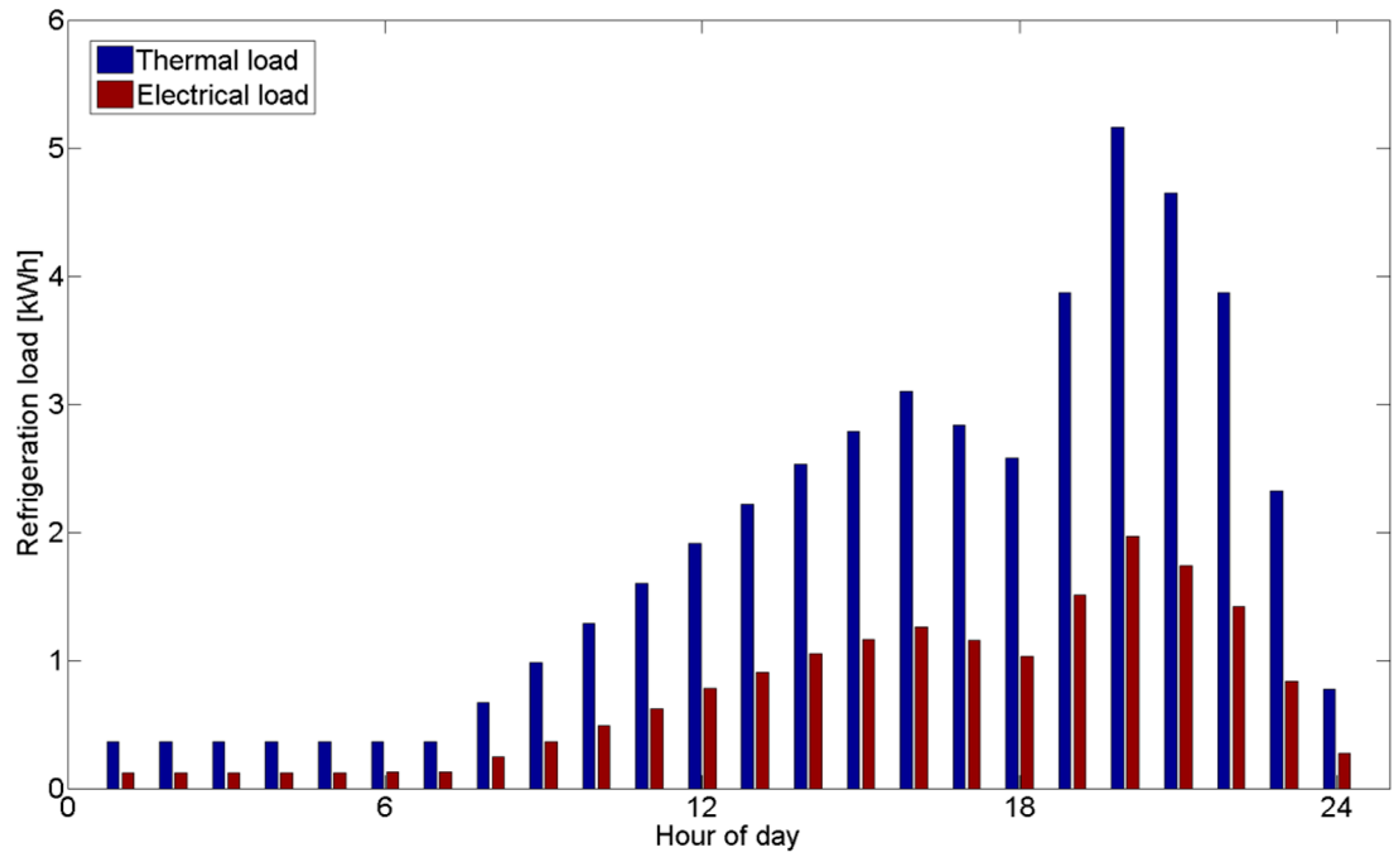
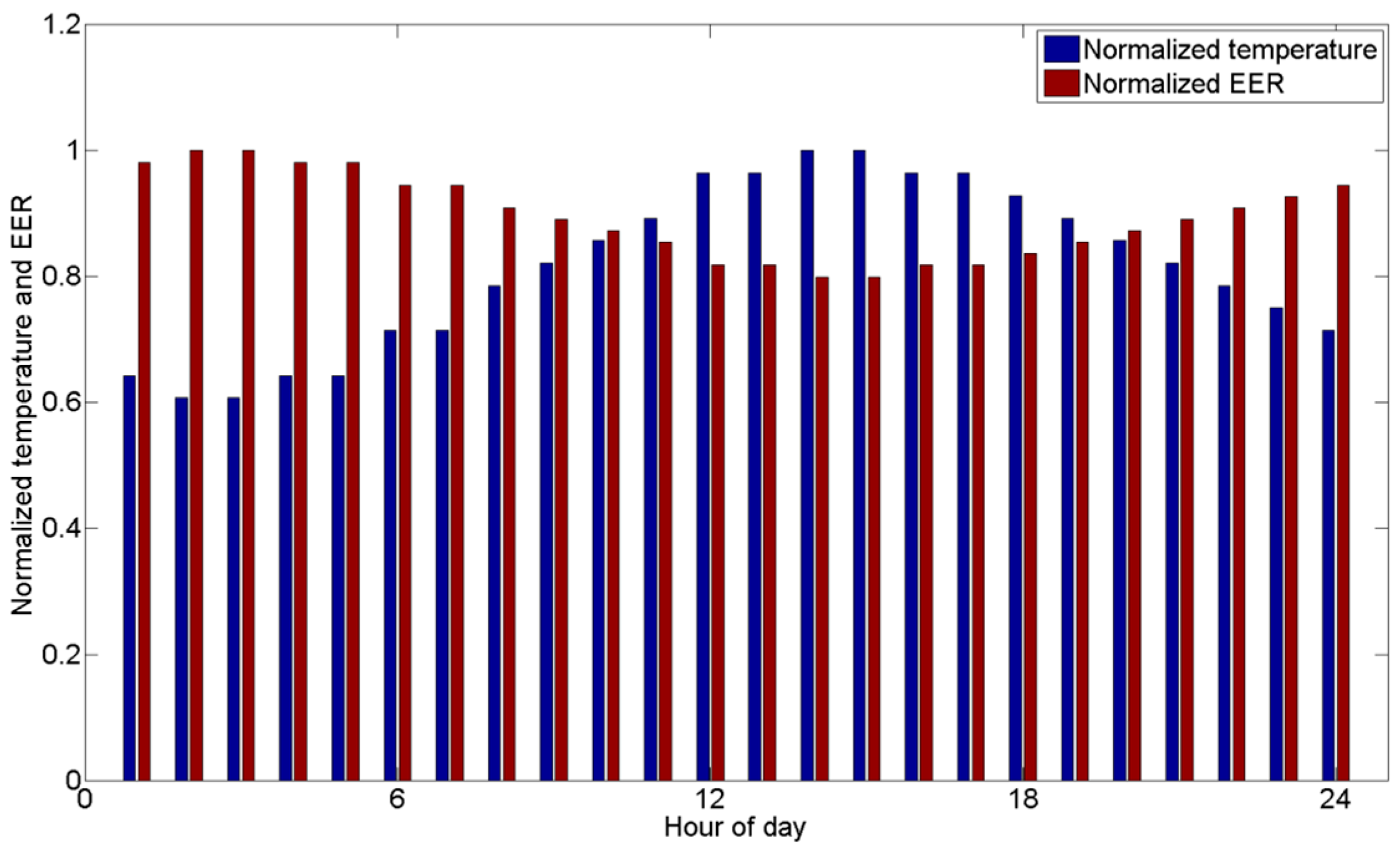
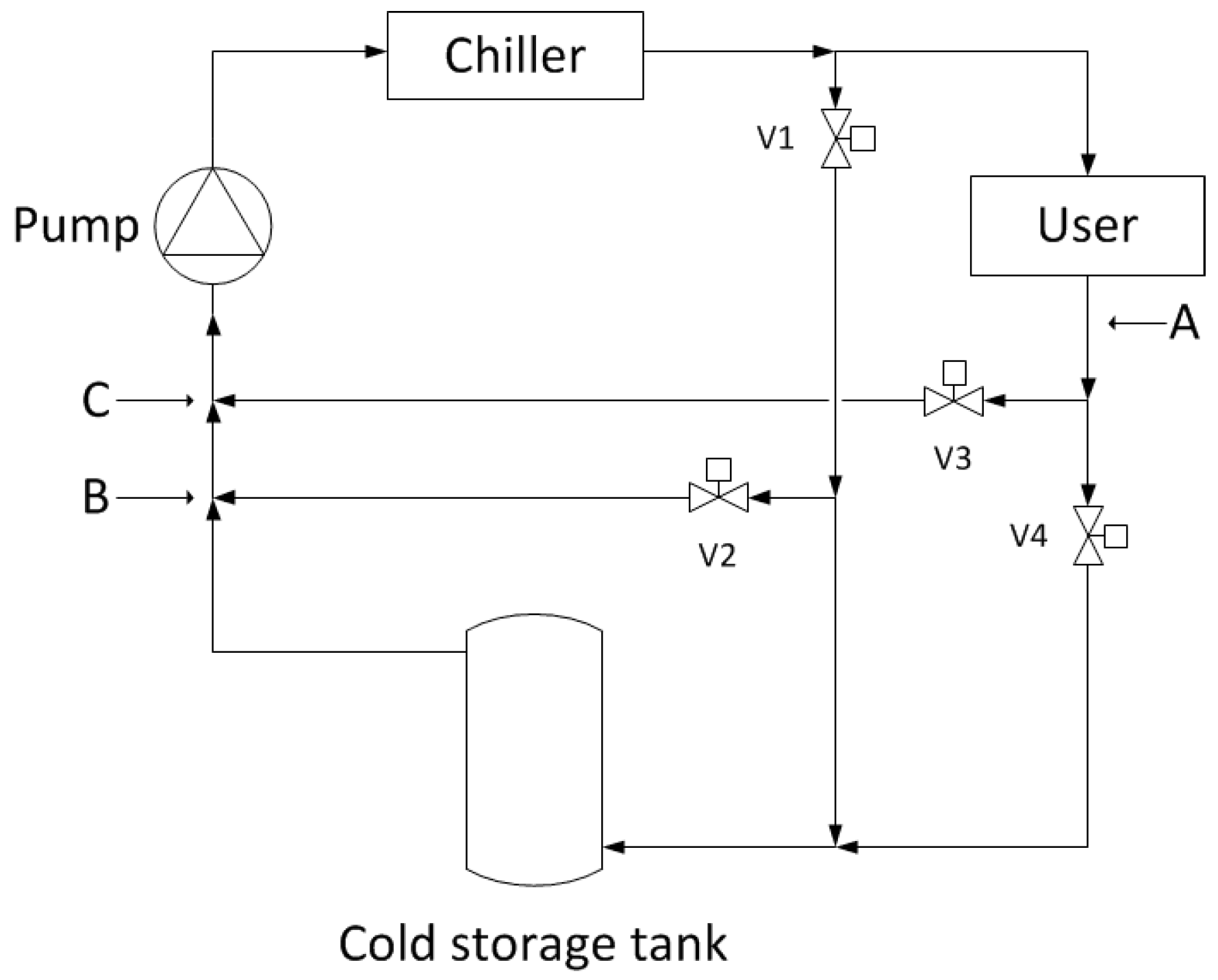
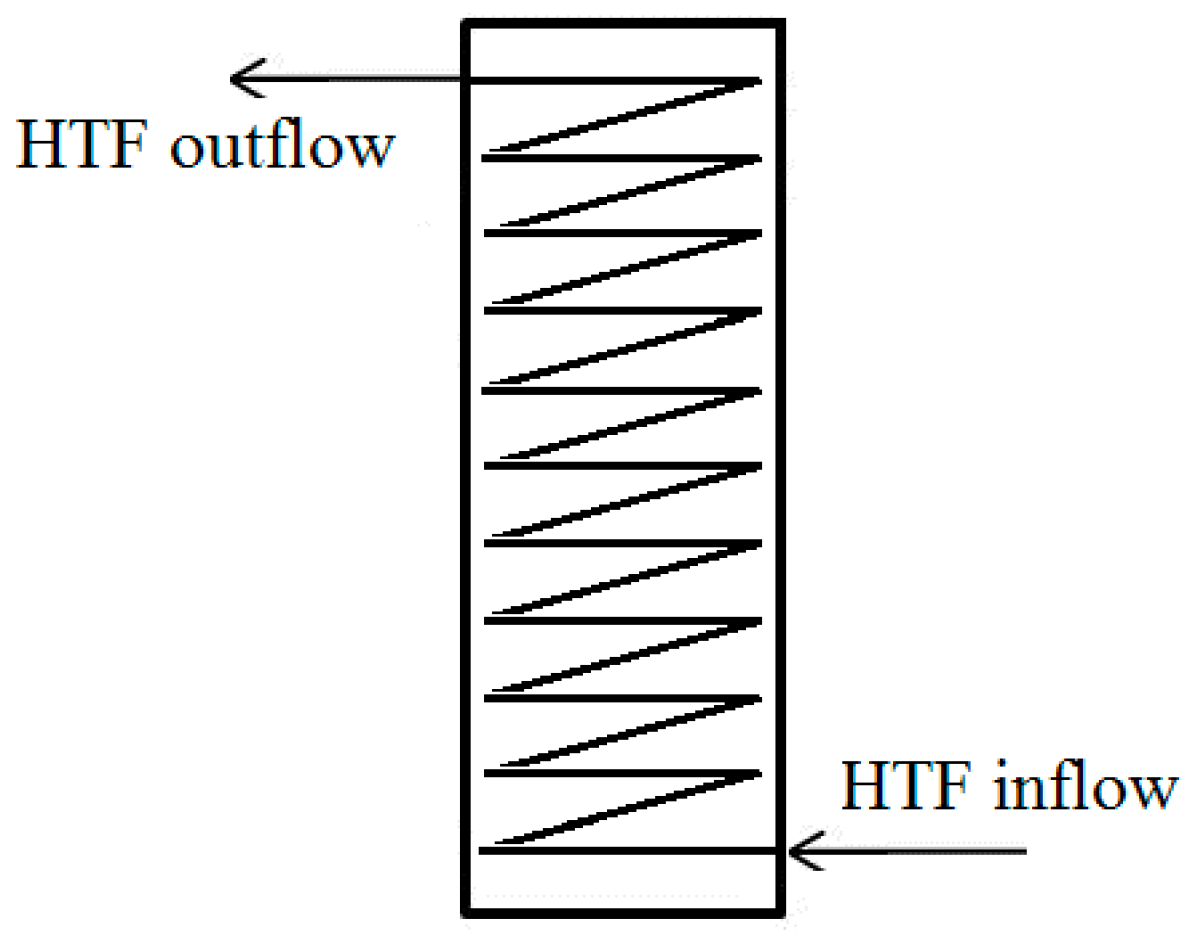
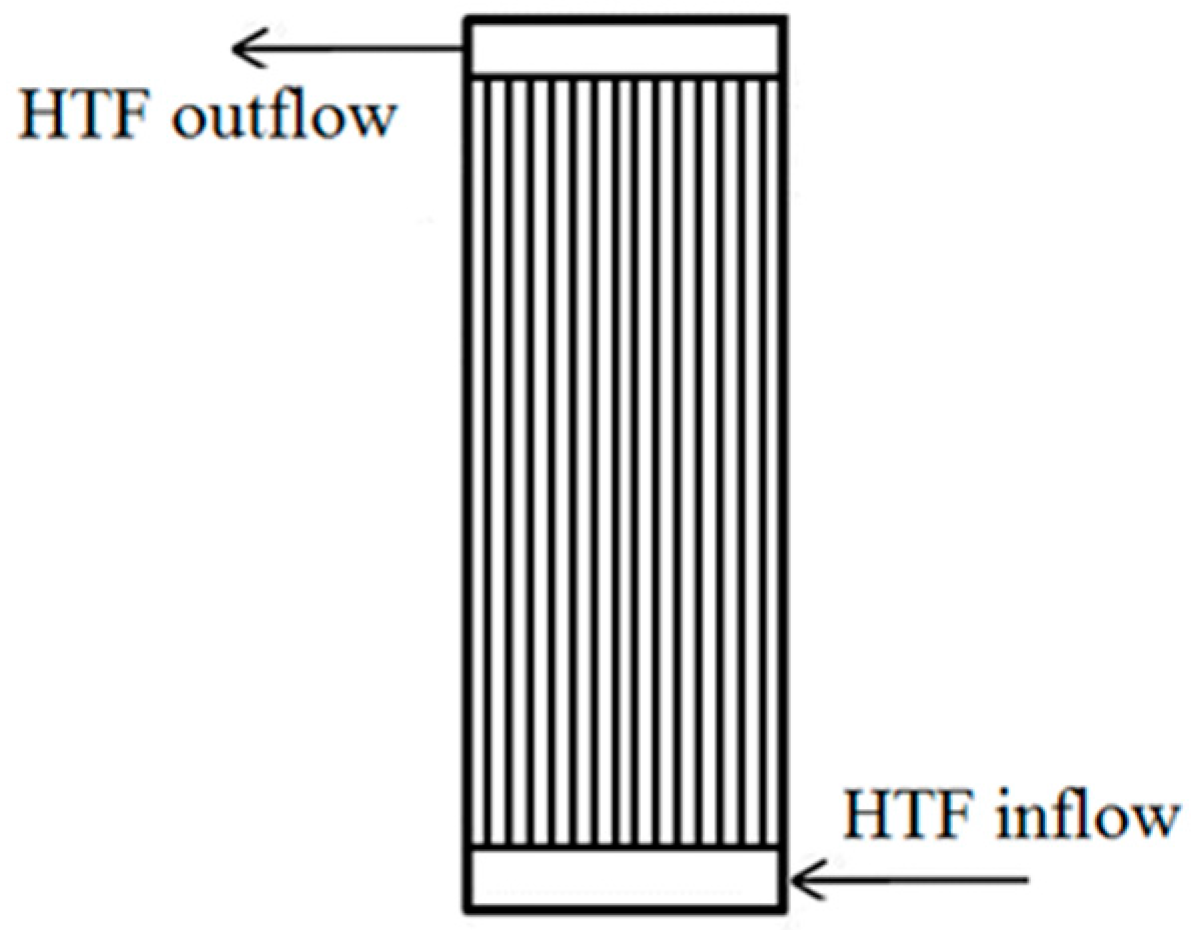
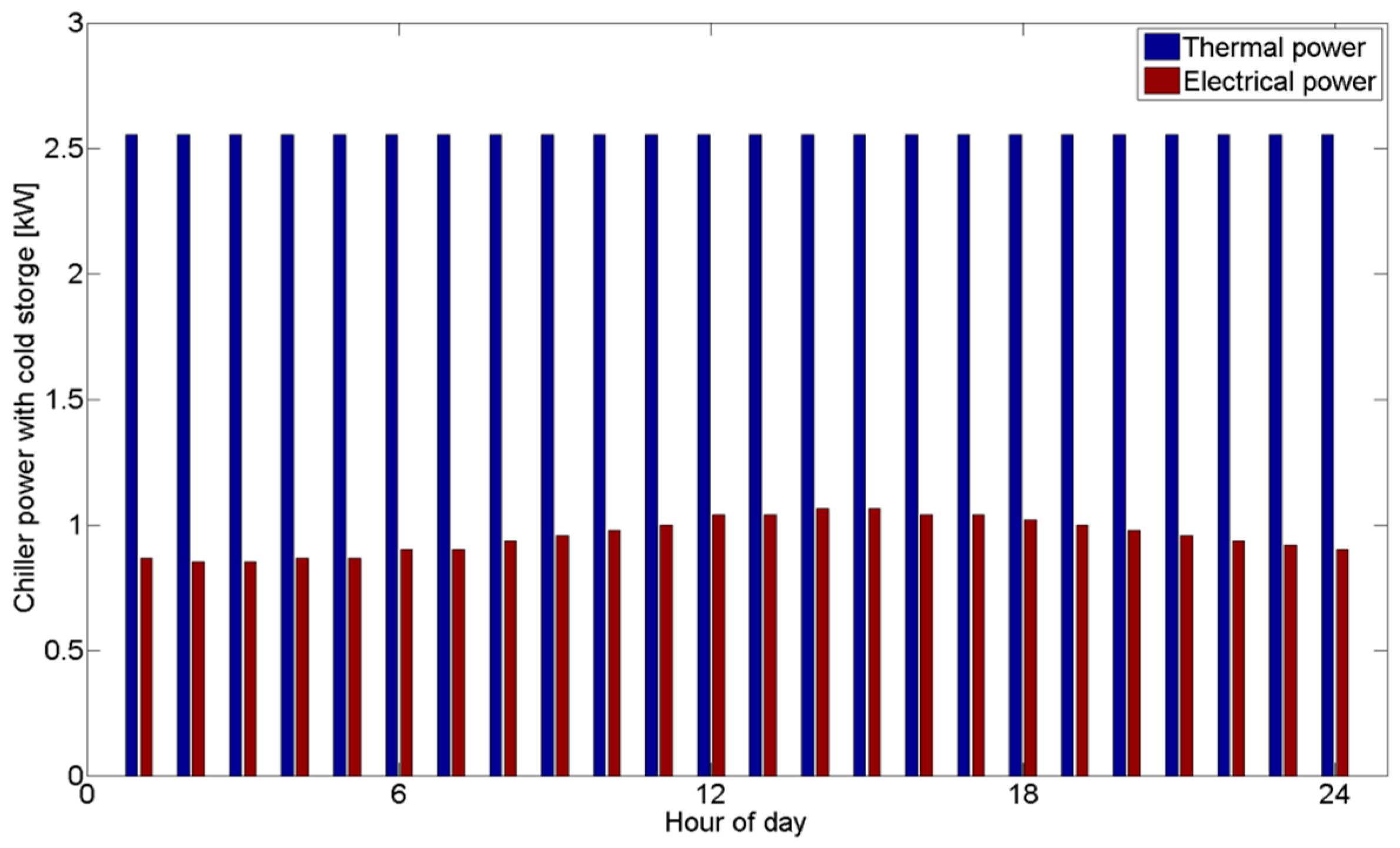
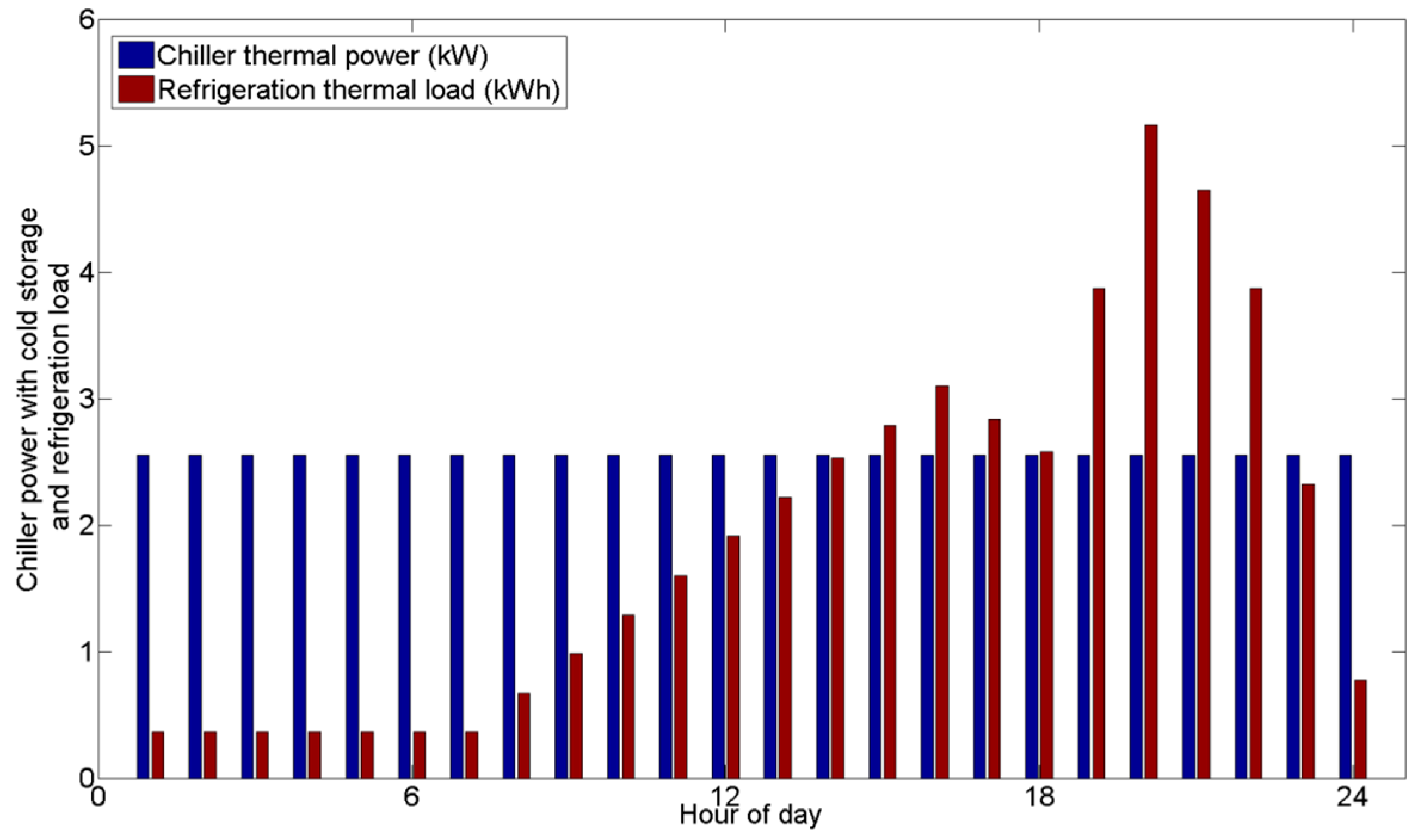

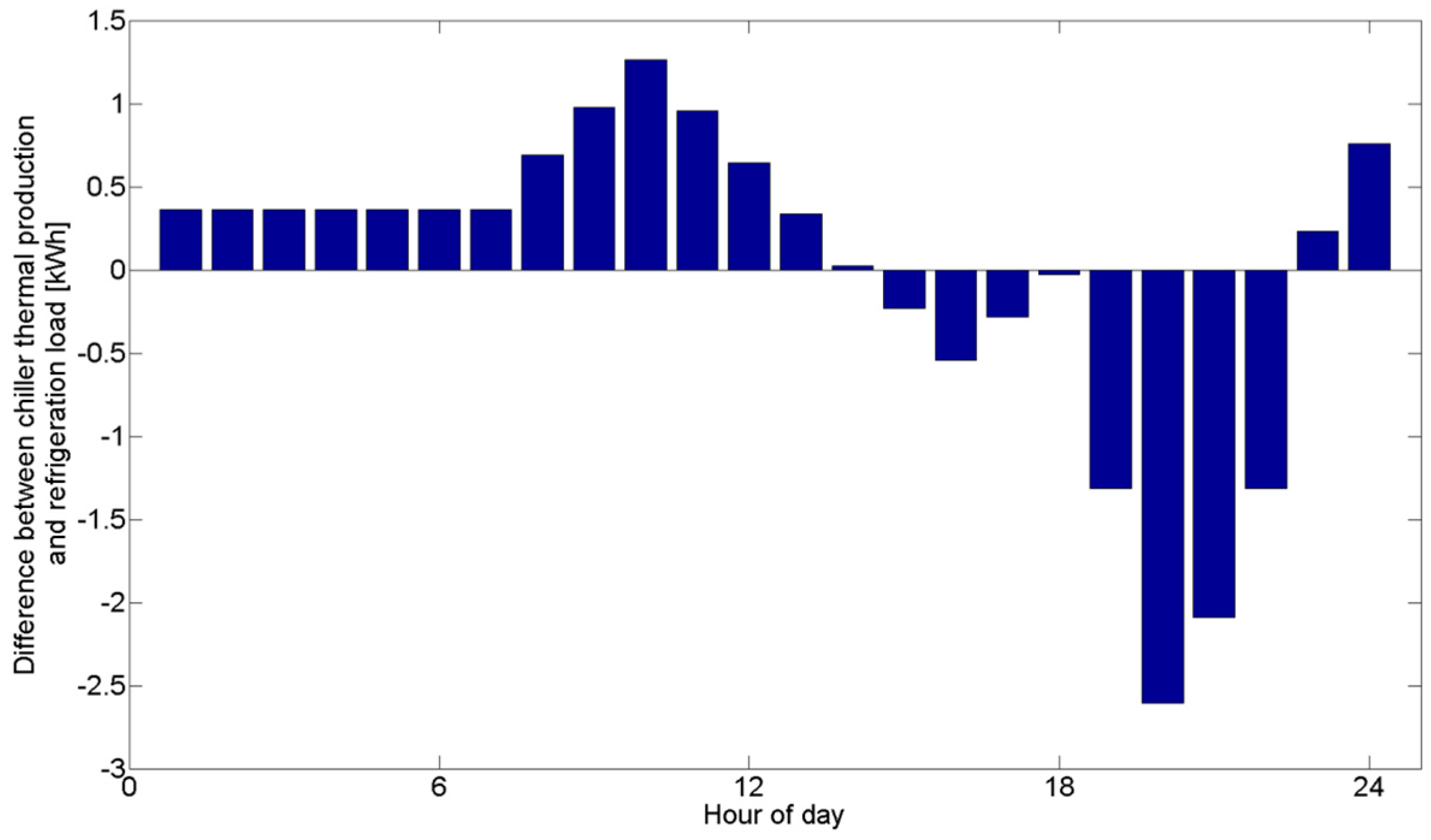
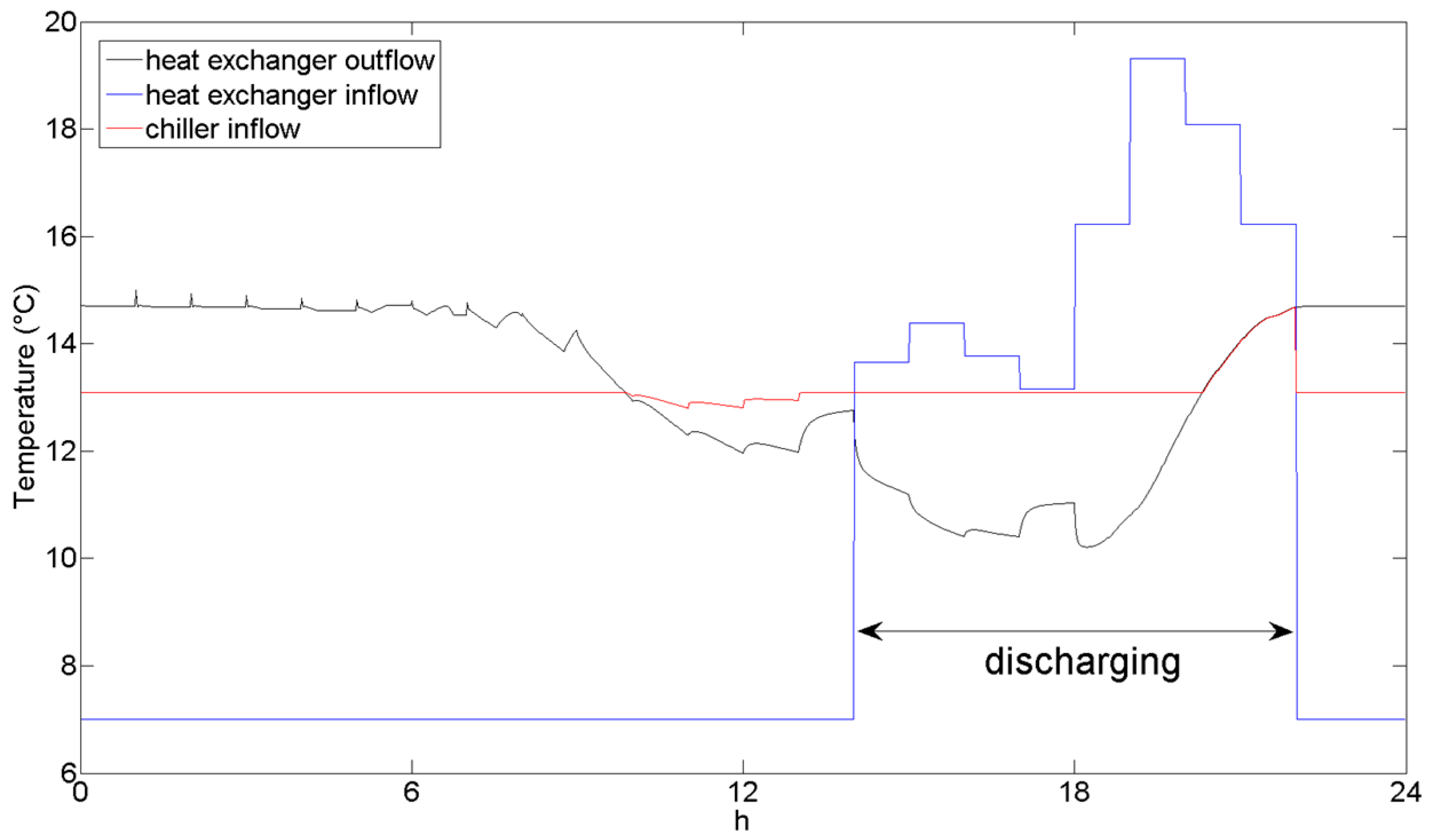


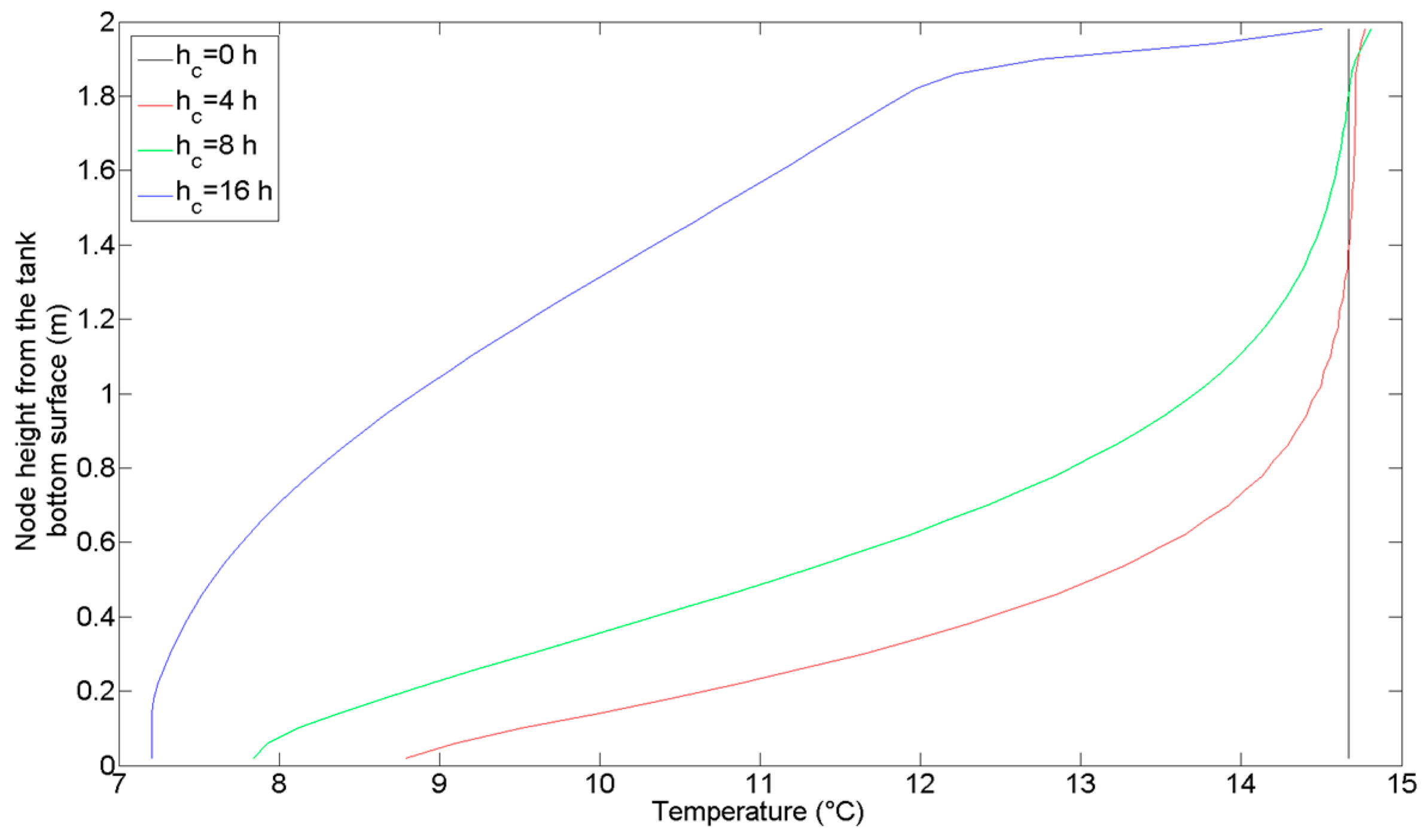
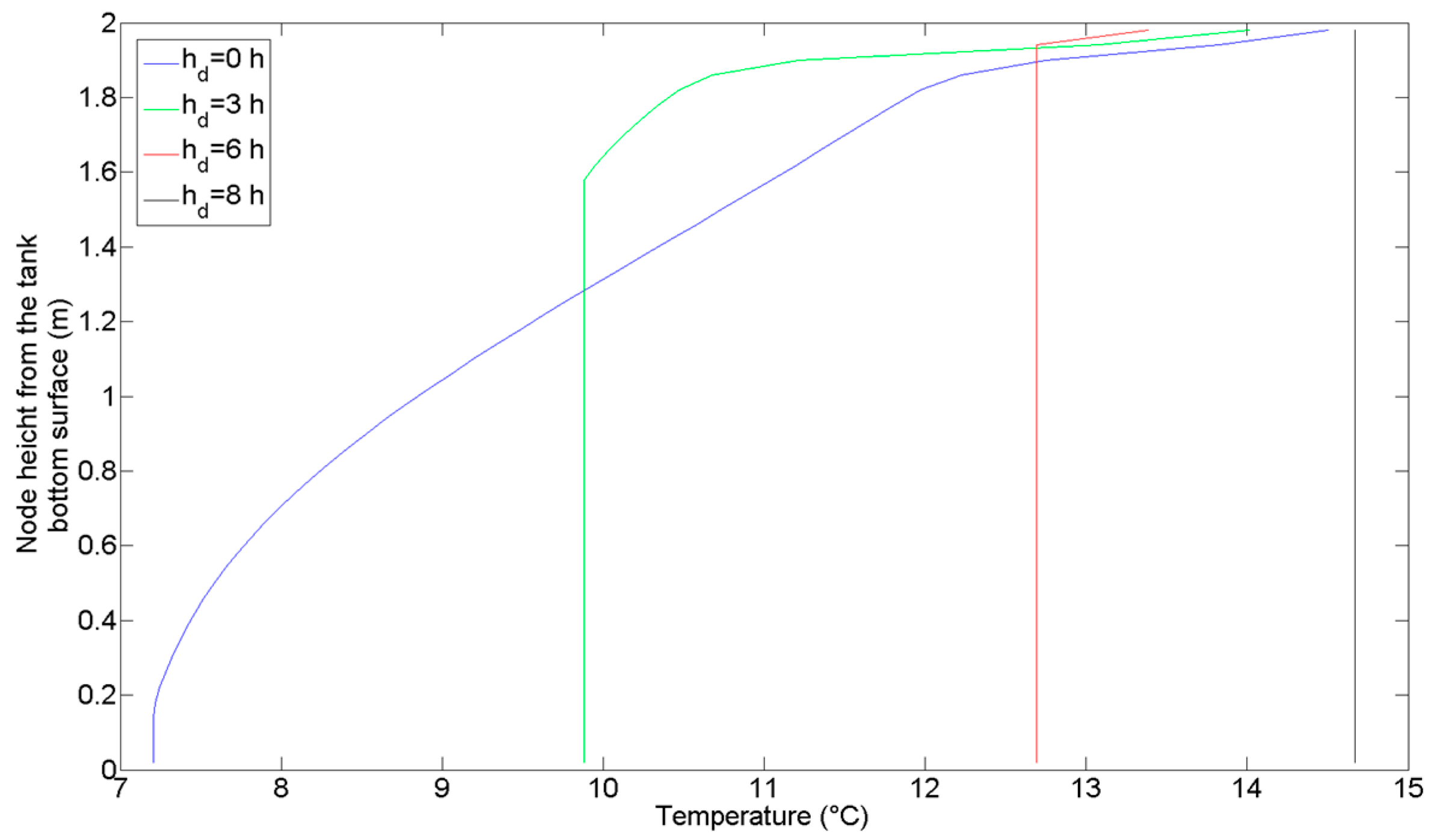
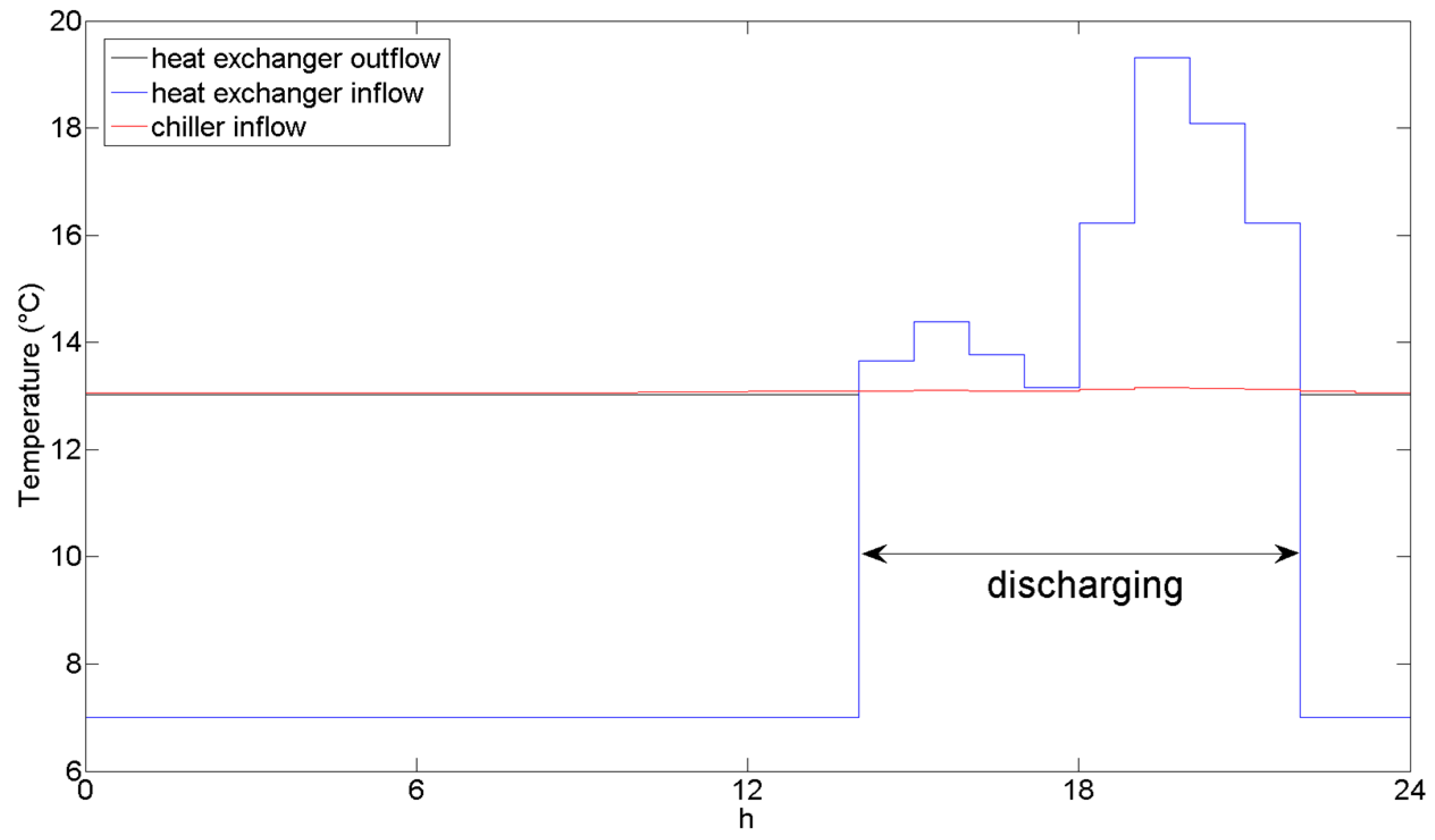

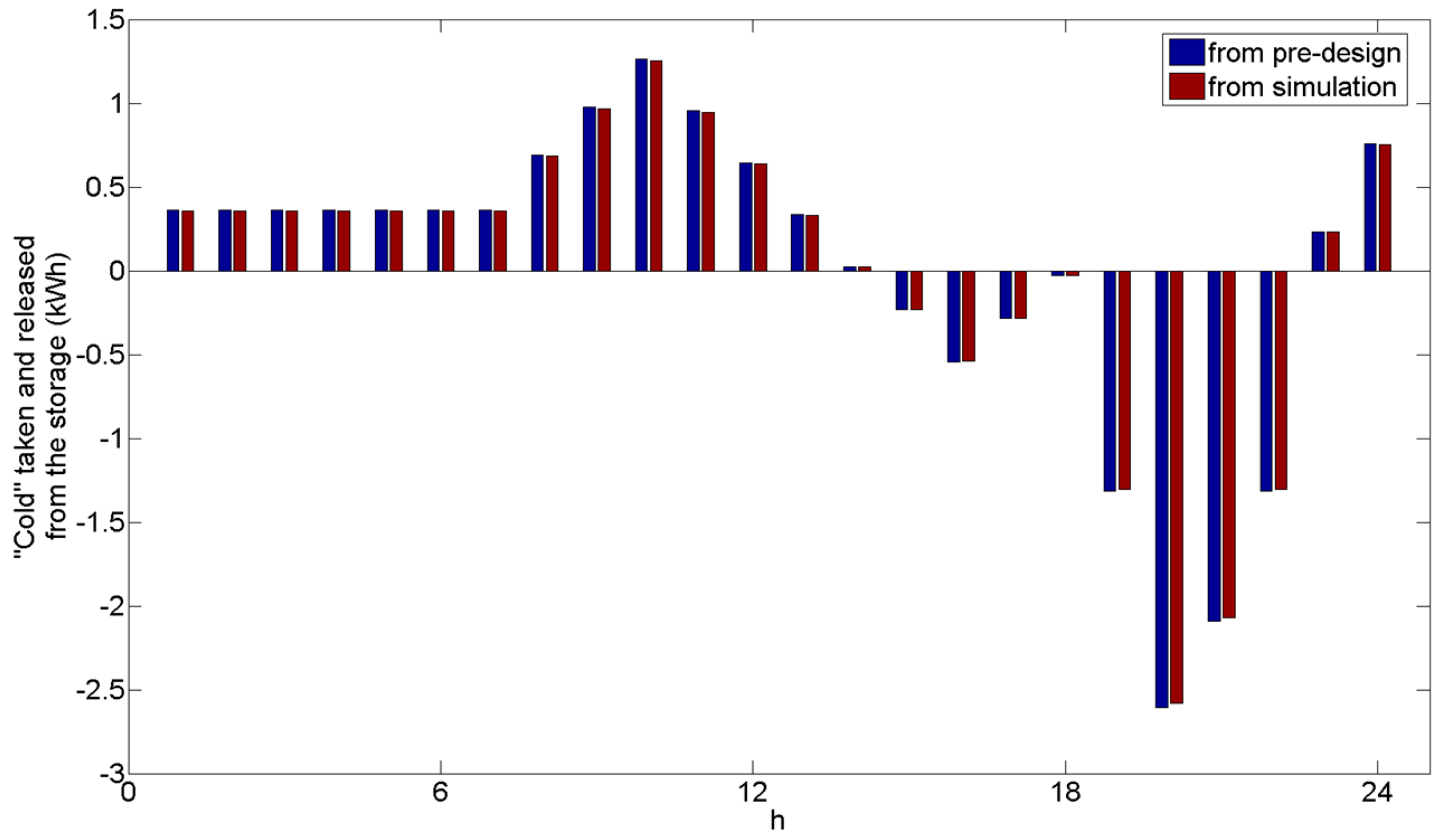
| Property | Value |
|---|---|
| Density | 900 kg/m3 |
| Thermal conductivity | 0.2 W/m/K |
| Latent heat of fusion | 18 × 104 J/kg |
| Melting temperature | 13 °C |
© 2016 by the authors; licensee MDPI, Basel, Switzerland. This article is an open access article distributed under the terms and conditions of the Creative Commons Attribution (CC-BY) license (http://creativecommons.org/licenses/by/4.0/).
Share and Cite
Mongibello, L.; Graditi, G. Cold Storage for a Single-Family House in Italy. Energies 2016, 9, 1043. https://doi.org/10.3390/en9121043
Mongibello L, Graditi G. Cold Storage for a Single-Family House in Italy. Energies. 2016; 9(12):1043. https://doi.org/10.3390/en9121043
Chicago/Turabian StyleMongibello, Luigi, and Giorgio Graditi. 2016. "Cold Storage for a Single-Family House in Italy" Energies 9, no. 12: 1043. https://doi.org/10.3390/en9121043





